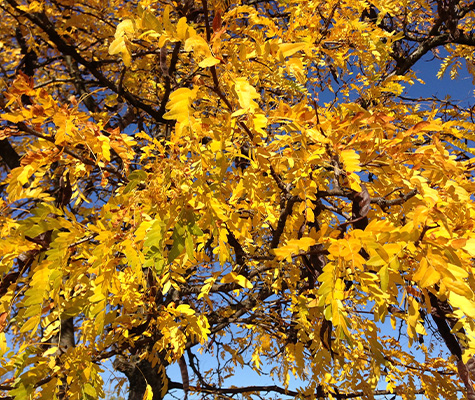Honey Locust
Gleditsia triacanthos
Overview
The Honey Locust is a large tree that can grow around 60 to 80 feet tall. It grows at a rapid rate and can live for about 125 years. It is native to North America (Chicago region) and has large thorns on its stems and bark. The hornless honey-locust is more commonly sold. The green leaves of the Honey Locust are compound and change into a golden yellow in the fall. Its flowers bloom in late Spring to early Summer and have a green to golden yellow color. The flowers hang in narrow clusters and they have a sweet fragrance. The Honey Locust has reddish-brown flat bean pods that grow around 12 to 18 inches long and can be harvested in the Fall and Winter. The pods turn black when they are ripe and contain a honey-like pulp.
Cultivation
The Honey Locust thrives in full sun within moist, well-drained, rich soil. The tree is resistant to salt, wind and draught once properly established, however, it can be affected by borers, leaf spot, and mildew.
Biodiversity Sustained
The Honey Locust provides food to multiple animals such as squirrels, rabbits, deer and raccoons thanks to the pulp in the bean pods. The pulp also attracts bees, moths, and butterflies.
On Xavier's Campus, over the Next 20 Years, this Tree will:
Stormwater Runoff Avoided: 3,813 Gallons
CO2 Reduction: 1,994 lbs
Environmental Benefits (in US dollars): $181
